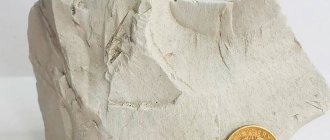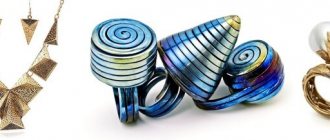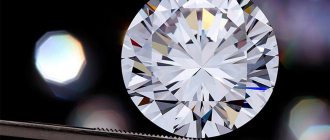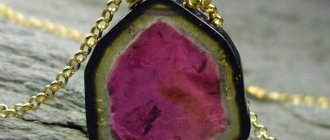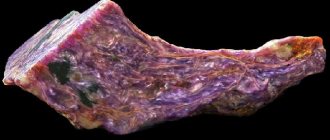What is kaolin clay? Advantages. How to use. Kaolin clay vs bentonite clay. Risks and side effects.
If you've been experimenting with bentonite clay as part of your natural beauty routine but are looking for a gentler option, then kaolin clay is perfect.
What is kaolin clay used for? This versatile substance is used as a gentle cleanser, gentle exfoliant, and natural ingredient to reduce acne and whiten teeth. Also for the treatment of diarrhea, ulcers and exposure to toxic substances.
Kaolin is full of minerals and detoxifying ingredients. Softer and less drying than other mineral rocks.
Let's see what kaolin clay / kaolinite is, where it is located, how to take it orally and use it in facial cosmetics
What's happened
Kaolin clay is primarily composed of kaolinite, a mineral found throughout the Earth. It is sometimes called white or Chinese.
What makes kaolinite useful?
Kaolin is named after the hill of the same name in China, where it was mined for hundreds of years. Today, kaolinite is mined in various places around the world, including parts of China, the United States, Brazil, Pakistan, Bulgaria, and others.
Formed in soils formed by the weathering of rocks in hot, humid climates, such as tropical forests.
Soft consistency, usually white or pink in color. The composition includes tiny crystals of the minerals silica, quartz, feldspar. Naturally contains copper, selenium, manganese, magnesium, zinc.
It is not usually taken orally for the purpose of obtaining nutrients, but rather to reduce gastrointestinal problems or, more often, applied topically to the skin.
Kaolinite and kaolin pectin are popular in pottery and ceramics, in the production of toothpaste, cosmetics, light bulbs, china, porcelain, certain types of paper, rubber, paints and other industrial products.
There are several different types and colors of kaolin clays available.
The common mineral is white in color, but occurs in a pink-orange-red hue due to the oxidation of iron and the formation of rust. Red kaolin clay indicates high levels of iron oxide near its location. This type is more suitable for people who want to prevent age-related manifestations.
Green kaolin clay comes from rock containing plant matter. It has high levels of iron oxide. Very drying and better suited for dermis prone to acne and excessive sebum production. Learn more about green clay
Click on pictures to enlarge!
Properties of kaolin
Raw kaolin is not plastic, crumbles easily and feels greasy to the touch. The mineral has high fire resistance and after drying acquires high strength. The material conducts electricity poorly and absorbs water well.
There are primary (sedimentary) kaolin and secondary. Primary is formed by the decomposition and weathering of minerals in igneous rocks, such as feldspathic gneisses and shales. This kaolin is rich in quartz and lies at 5-50 meters in places of faults in the form of nests and circles from 2-120 meters thick. Secondary kaolin is formed as a result of erosion and deposition of rocks among sands. This kaolin is enriched with quartz and other various substances. The world's reserves of kaolin are large - 15-16 billion tons.
Advantages
How does kaolin affect the skin? Is it good for gut health?
Let's describe the potential benefits of kaolin clay.
Does not irritate sensitive skin
Kaolin is suitable for almost any skin type and is considered one of the softest available. Shows a delicate, non-irritating effect in case of increased sensitivity. Found in cosmetic products: masks, facial scrubs, helping to cleanse and exfoliate, leaving behind a smooth surface, even tone and texture.
Because it is gentle, it serves as a suitable gentle cleanser and detoxifier for sensitive skin.
Kaolin has an attractive pH level close to that of human skin. This means that it does not cause irritation and has a beneficial effect on sensitive, delicate or dry epidermis.
It is recommended to apply kaolin clay to your hair and scalp. It will cleanse and reduce irritation without drying out your hair. Mouth rinsing, gum cleansing and teeth whitening have a beneficial effect.
Fights acne and inflammation
According to a 2010 report, natural clays have been used to help with skin infections since the earliest recorded history. The elements have natural antibacterial properties. Capable of killing a wide range of human pathogens that cause skin rashes and acne.
How is kaolin useful for acne? By absorbing excess oil and dirt from the skin surface, it helps unclog pores and prevent the appearance of blackheads and blemishes. Soothes and reduces redness and signs of inflammation.
Demonstrates a positive effect in clearing acne-prone epidermis without worsening irritation. If used approximately twice a week to exfoliate, it will leave a soft, smooth feel. The face will be refreshed and oiliness will decrease.
Reduces signs of aging
Kaolin clay is ready to prevent signs of aging such as fine lines, wrinkles. Tones and tightens the oval of the face.
There is evidence that it increases skin elasticity and firmness due to its ability to remove dead cells and reduce flaking and dryness. The iron contained in kaolin clay, especially the red varieties, is believed to help soften and fight damage.
Kaolin clay evens out overall tone by lightening dark spots, redness and irritation due to insect bites, rashes, poison ivy, etc.
Potential help in treating gastrointestinal diseases
Kaolin pectin, a liquid preparation of kaolinite and pectin fibers, is used to treat diarrhea and stomach or intestinal ulcers.
The most common industrial preparations of kaolinite for diarrhea include attapulgite and bismuth subsalicylate (the active ingredient in Pepto-Bismol). Other brands sold in the US include Kaodene NN, Kaolinpec and Kapectolin.
Another traditional use is to soothe the stomach. In some parts of the world, kaolin clay has historically been common as a food grade clay for oral use to suppress appetite and support detoxification. Widely used for weight loss.
Helps blood clotting
Certain types of kaolin are used to speed up blood clotting and stop dangerous bleeding. There are medical facilities that infuse kaolinite-based aluminosilicate into certain types of gauze materials to treat wounds.
Mask based on kaolin against acne
To prepare the product, you need to mix one large spoon of white clay with two spoons of good vodka. For viscosity, purified water is added to the mixture. After mixing all the ingredients, a little aloe juice is added to the mixture. The mask should be applied to the skin for ten minutes and then washed with cool water.
Kaolin, due to its absorbent effect, is often added to anti-cellulite products, since this mineral is able to remove dead skin cells, excess sebum, draw out impurities and toxins and saturate the body with useful minerals. After using such products, the subcutaneous vessels become more flexible. Also, due to kaolin, collagen is formed in cells, which is extremely important for maintaining tissue elasticity.
How to use
By purchasing dry or powdered kaolin clay, you can make your own natural cleansing masks and facial scrubs at home. There are ready-made products made from kaolinite, or add the powder to your favorite beauty cleansers.
Make your own skin care products using kaolin.
- Mix clay powder with a little water. You need to get a paste that is easier to work with. The structure of the paste includes tiny crystals that can exfoliate, cleanse and refresh the upper layer of the epidermis. By combining with oil, dirt and dead cells, they are easily removed.
- The volume of water required to add depends on the size of the kaolinite particles and the specific chemicals present. Read the instructions carefully. Determine the best ratio.
- Start with a small amount of water and increase as needed. It should form a thin paste-like consistency, thick enough for easy application.
- Apply to damp skin and rub in gently. Let it soak in for 5-10 minutes. Rinse off with warm water.
- In the bath - add 800-1000g each of kaolin clay and Epsom salts to a warm bath to treat your skin and relax at the same time. It is useful to add essential oils (lavender) for further relaxation and health of the dermis.
- For hair - apply the prepared kaolin clay paste to the scalp and roots. Leave on hair for about five minutes. Rinse and condition thoroughly.
- For healthy teeth, add a small amount of kaolin clay to your toothpaste. Clean your gums and whiten your teeth by removing plaque. After the procedure, rinse your mouth thoroughly. Do not swallow the product.
Is White Clay Useful or Not?
White clay or kaolin is a natural material with high healing properties. Is this really so? To answer this question, let's figure out what it is and what it is eaten with?
Let's see what it consists of:
White clay (kaolin) is a compound of silicon and aluminum oxides with the addition of water. Kaolin contains mineral salts and trace elements that we need: silica, zinc, copper, nitrogen, calcium, magnesium, potassium, etc., and in a form that is very well absorbed by the human body. The main element of white clay is silica. Louis Pasteur in 1878 said about it: “The therapeutic action of silica has a great future.” Without silica, the normal functioning of a living organism is impossible. Its deficiency entails the inability to absorb other microelements. Violation of silicon metabolism is accompanied by a general metabolic disorder, causing anemia, osteomalacia (softening of bones), hair loss, and joint diseases. In 1912, the German doctor Kühn established that silicon compounds can prevent the development of atherosclerosis. In 1957, French scientists M. Lepger and J. Lepger described facts confirming that with atherosclerosis in sick people, as a rule, the silicon content in the tissues that make up the walls of blood vessels is very low compared to healthy people. They also experimentally confirmed that the introduction of silicon compounds into the body stops the development of atherosclerosis and helps restore the normal purity and function of the walls of blood vessels. Radium is also present in clay. It absorbs toxins and heavy metals and is used as the main component for the manufacture of drugs for oncology therapy. This natural component is a good absorbent; it removes radionuclides and heavy metals.
As we see, this is a substance that has been used since ancient times and is successfully used in our time. It is best to buy clay for healing and treatment in pharmacies or specialized eco-stores, because clay must undergo special cleaning, bactericidal control and testing for the presence of radioactive substances, and also have the appropriate certificates.
White clay is discussed clearly and interestingly in this video:
How to use and what to do with it?
Basic course of cleansing the body with white clay: This course is designed for four weeks: 1 week - take orally one teaspoon of white clay powder diluted in a glass of water in the morning and evening 2 week - two teaspoons per glass of water in the morning and evening 3 week - by one tablespoon per glass of water morning and evening Week 4 – two tablespoons per glass of water morning and evening IMPORTANT!
- To prepare the clay solution, use non-metallic utensils.
- Dilute the clay in water at room temperature
- You should drink it in the morning on an empty stomach an hour before meals.
- In the evening, consume before bed, but not earlier than an hour after the last meal
- For maximum effect, take very small sips and swallow slowly. So that the clay has time to be absorbed throughout the gastrointestinal tract
- You can rinse your mouth with the solution before swallowing.
Be sure to drink plenty of clean water in small sips throughout the day!!!
Here are some more clay treatment recipes:
To treat joints, clay water is used, which should be rubbed on the sore area. For better results, you can add 2-3 crushed “cloves” of garlic to the clay water.
Instead of external use, you can take clay internally - 1 teaspoon before each meal. It helps a lot with diseases such as osteochondrosis.
Varicose veins can also be treated by rubbing with clay water. Salt baths before bedtime and, after the bath, applying clay cakes to the sore areas also help a lot.
To remove heel spurs and old calluses, it is recommended to take warm clay baths. For this, 1 tbsp. clay (preferably blue or light blue) should be filled with one liter of boiling water. Let the solution cool slightly and soak your feet in it. Keep for no more than 25 minutes, but not less than 20 minutes. After the bath, the remaining clay should be washed off and the feet should be covered with a warm towel.
Hernia of the spine is treated with red clay. To do this, you need to moisten the clay with water and form a ball out of it. The clay ball is then covered with gauze and heated to 36 degrees. After this, the ball is applied to the hernia, covered with cellophane on top and secured with a plaster. When the clay dries, the compress can be removed. This recipe is also effective for umbilical hernia.
Psoriasis can be cured with clay applications. Powdered clay and sea salt should be mixed in equal proportions to the consistency of sour cream, adding a decoction of the string. The resulting mixture should be placed on a cloth and applied to the psoriasis lesions for at least two hours. The course of treatment must be continued for two weeks every day.
Sore knees can be cured by rubbing them daily. Clay powder should be mixed with massage oil and rubbed into sore areas. A complete cure will require a 14-day course.
3 useful tips for using clay:
- Clay can only be used externally once. Reuse is not acceptable, because it has absorbed all the harmful substances and will no longer be beneficial.
- Clay lotions should be made only after 1.5 hours after eating.
- It is recommended to use cool clay, even if the patient is cold (it is better to wrap it up warm).
You can order White clay from a trusted manufacturer here: click here!
EcoMir wishes you health and well-being!
Internal use
Kaolin pectin is taken orally in the form of a liquid suspension. Ready to help control diarrhea in adults. Used with food or separately.
For best results, it is recommended to take within one to two days after the onset of bowel movements. No more than 24 hours.
For adults, the usual dose is four to eight spoons (60 to 120 milliliters) taken after each loose bowel movement. Works best if you drink enough fluids and follow a non-irritating, light diet for a few days.
How is it different from bentonite clay?
What is the difference between kaolin clay and bentonite clay?
An important difference taken into account when making face masks and other cosmetic products for skin treatments is their pH level . Bentonite has a higher pH than kaolin. This means that the effect of the former is gentler and less irritating.
Bentonite absorbs more water than kaolinite, which means it dries more. This fact makes kaolin the best choice for those with sensitive, dry, damaged skin. Bentonite is more favorable for oily people.
Risks and side effects
Is kaolin clay safe? It is generally non-toxic and safe for most people when used topically in small doses.
- Getting kaolin powder in your eyes can be harmful.
- Should not be applied to open wounds.
- Anyone who has ever had an allergic reaction to similar facial products should avoid using it.
- Before taking orally, consult your doctor first. Report any side effects, including constipation, fever, fatigue, lack of appetite, or inability to have a bowel movement.
- Be careful when the described clay is used as a food grade in combination with medications, including antibiotics and laxatives.
- Certain forms of kaolin, inhaled in large quantities, lead to dangerous consequences. The American Occupational Safety and Health Administration (OSHA) has legally determined the maximum dose for safe total exposure of kaolin at a work site to 15 mg per 1 m3. And respiratory exposure is 5 mg/m3 for eight hours of work.
- Other authorities believe that the safe limit should drop to 10 mg/m3 per day.
In medicine and pharmaceuticals
White clay has antiseptic and anti-inflammatory properties and is included in toothpastes. Food grade kaolin is used for gargling and mouthwashing and rinsing the nose. It removes inflammation of the gums and prevents the development of foreign bacteria and viruses.
Clay has virtually no side effects and causes negative consequences only if you are personally intolerant to any of its components. Of course, as with any remedy, you should not use it excessively, especially when taken orally.
Nevertheless, white clay remains one of the most “accurate” healing agents. It is used to make pastes, ointments, and powders. It gently removes tartar without damaging the enamel, eliminates eczema and diaper rash without causing burns or irritation.
Reviews
There are reviews on the Internet, but they seemed to us to be advertising (custom-made), so they were not included.
We found several relatively real and informative ones:
- Remarkably cleanses and nourishes the skin.
- I brush my teeth with white kaolin clay for about a month once a day (other times with toothpaste). The enamel became a little whiter, plus a pleasant feeling after cleaning.
- I liked the result after applying the clay mixture to my face. The pores narrowed, the skin tightened and became smooth. After several treatments, minor acne cleared up.
- I took it internally to cleanse the body of toxins. At the same time I lost weight. I did wraps.
- Helped with toxicosis during pregnancy. Contains silicon needed by organs.
From negative reviews:
- It's not very pleasant to drink, it tastes like chalk.
- If you leave it too long, it dries out a lot.

